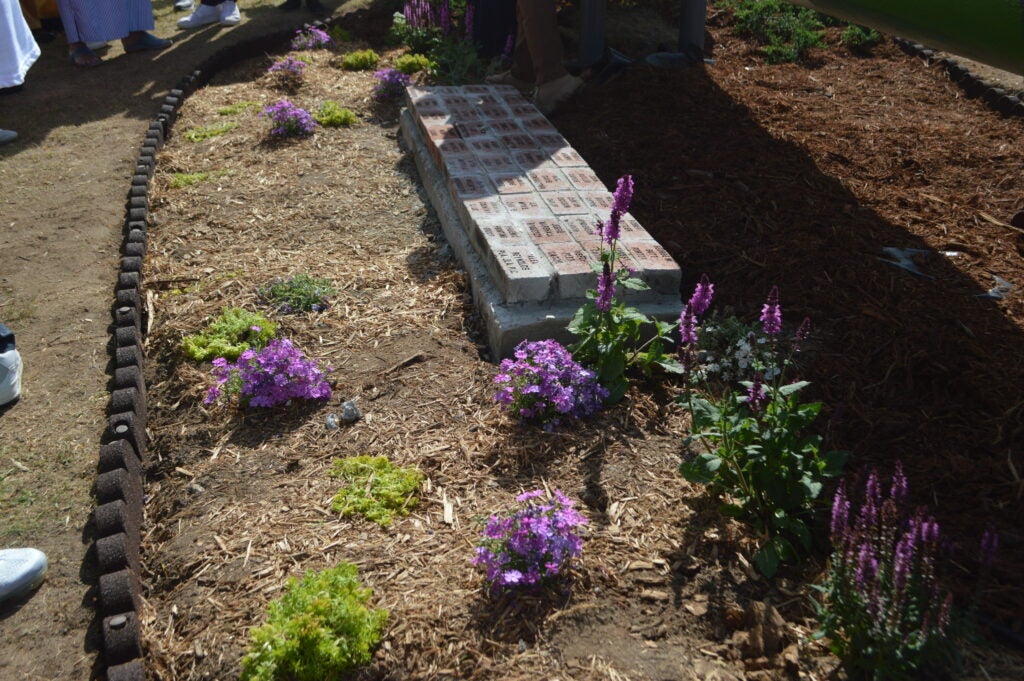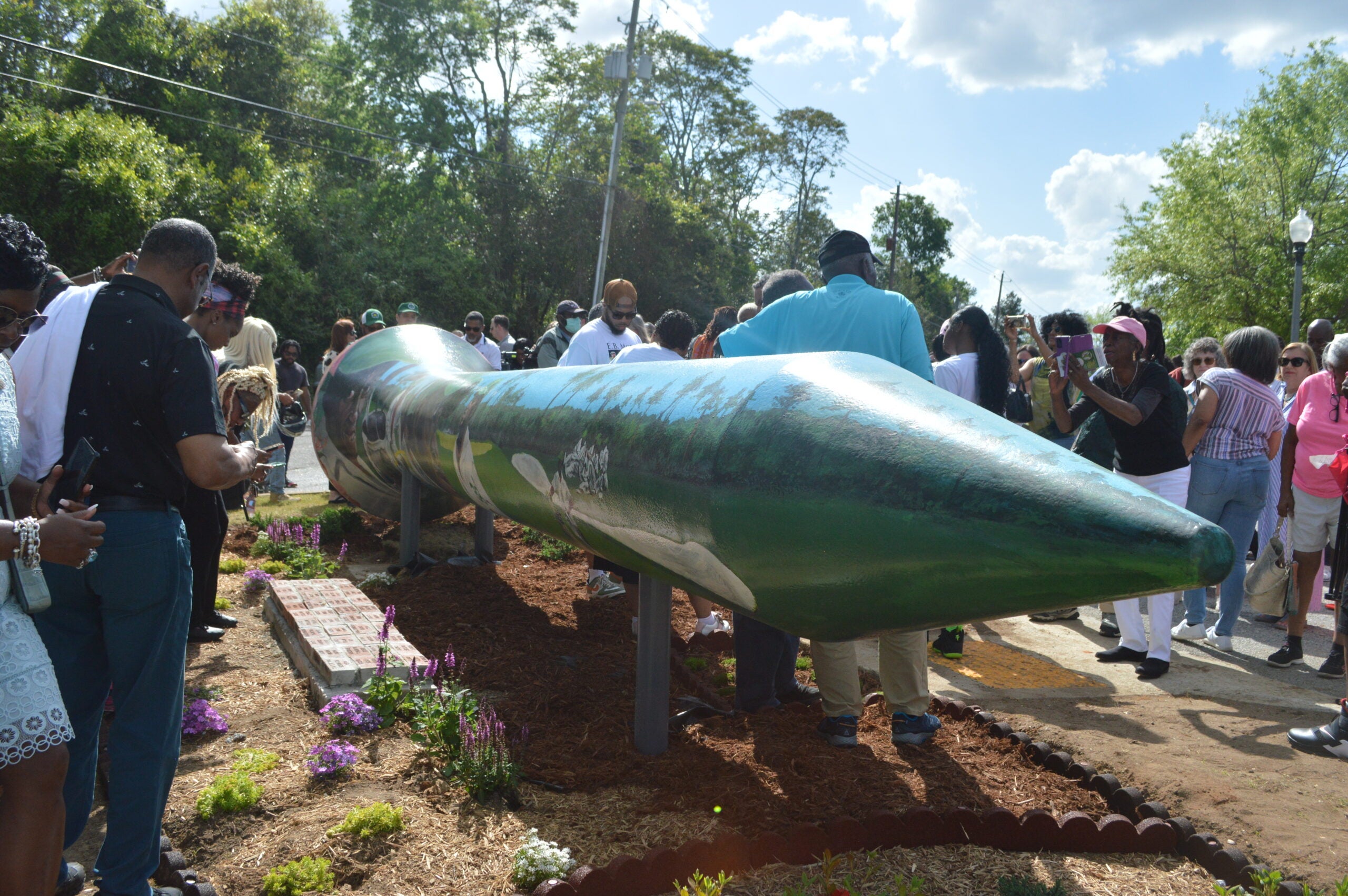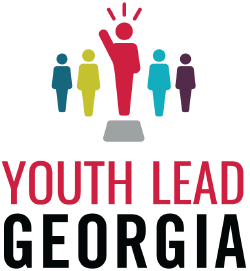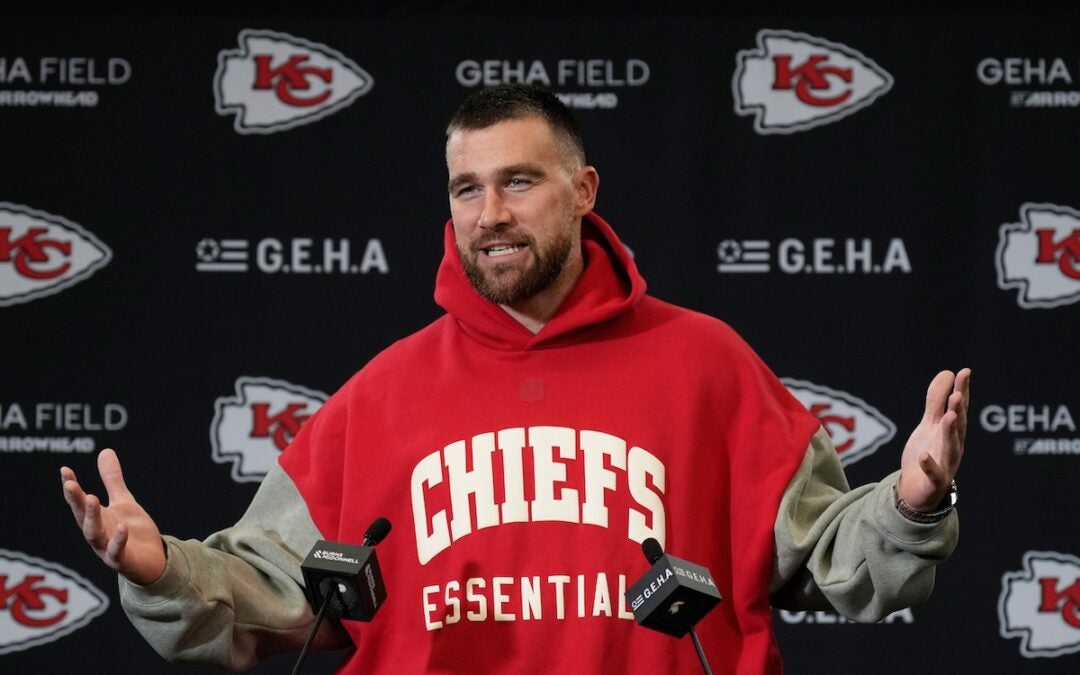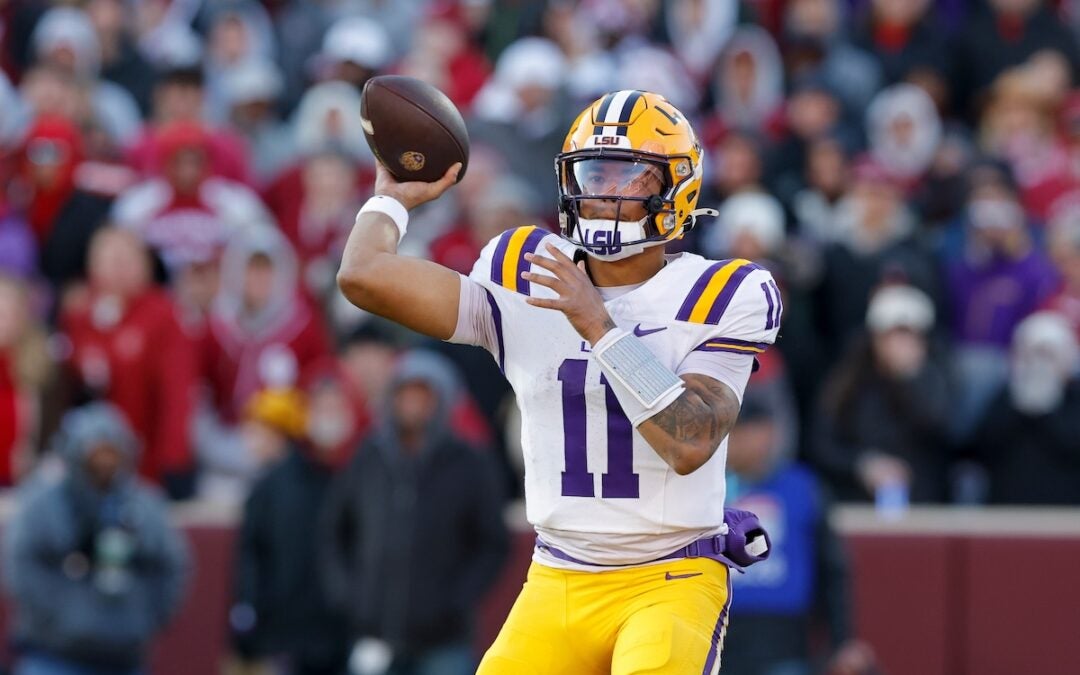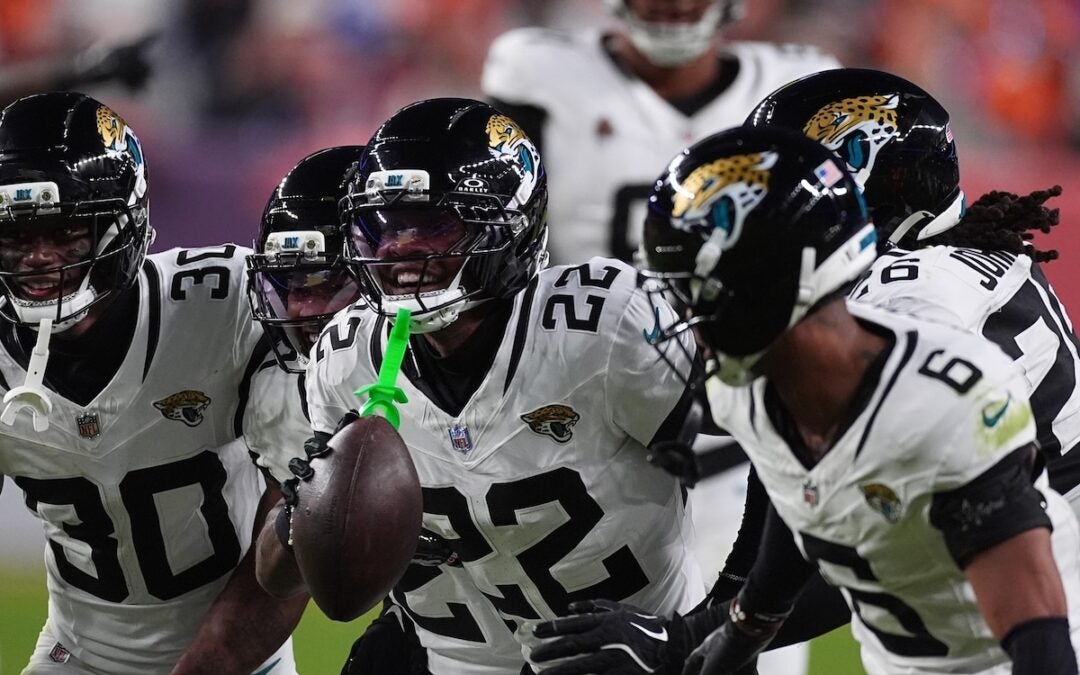Correction: a previous version of this article stated that Gary Blair won the Masters in 1974 and 1978. This has since been corrected to say Gary Player.
A sculptural monument and mural was unveiled on Thursday afternoon, paying tribute to Augusta’s African American Champion Caddies from 1935-1982.
The monument, a 25-foot long sculpture of a golf tee, was created by Ed Durant and was painted with a mural by Baruti Tucker. It is situated outside of the Sand Hills Community Center.
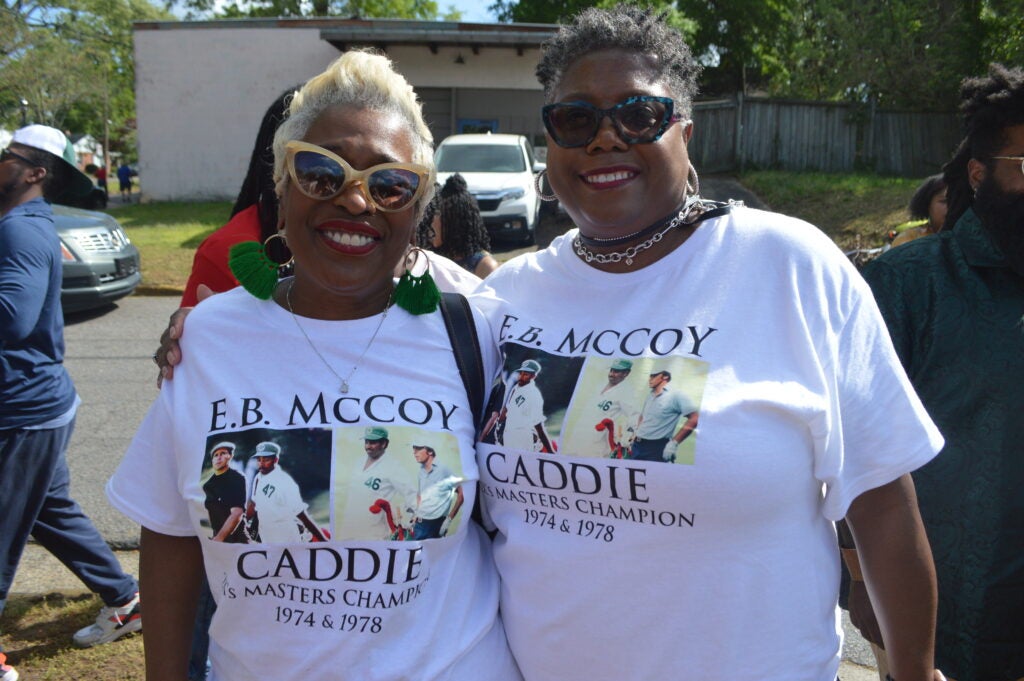
For generations, African American caddies were a dominant presence on Augusta’s golf courses, developing unmatched knowledge of the terrain. However, these individuals were often overlooked or forgotten.
Many began as youths, helping transform what was Fruitlands Nursery into The Augusta National. They honed their skills at the Augusta Municipal Golf Club, known as “The Patch,” after its desegregation in 1964.
“Today, we honor the great men who served as caddies for champion golfers during a time when their knowledge, skills and presence were indispensable, yet their names were rarely spoken and their stories often overshadowed,” said Leon Maben, vice president of public art with The Greater Augusta Arts Council. “This moment brings their legacy into the light where it belongs.”
MORE: Woad, Romero tied after day 2 at Augusta Women’s Amateur
Garreth Carpenter, the grandnephew of Masters champion caddie E.B. McCoy, Jr., said the ceremonial event would cement these caddie’s places in history.
“My uncle, Edward E.B. McCoy, was on the bag of Gary Player when he won (the) Masters in 1974 and [then] 1978. My grandfather Leon, my father Gary, my brother, myself, were all caddies….and carried on that tradition of the men who walked the fairways before us. You see, these caddies of Augusta National, they were extraordinary men,” said Carpenter.


About the artwork
The massive golf tee features artwork of caddies on the green, painted by artist Baruti Tucker.
The painted images were inspired by the likenesses of Augusta National Golf Club Masters Tournament champion caddies William Stokes, Willie Peterson, Jr., Edwin B. McCoy, Jr., Jariah Beard, Sr., Carl Jackson and Roosevelt Smalley, Sr.
Tucker used his signature awfingah technique, painting the mural entirely with only his fingers.
This project began through the unanimous approval of the Augusta-Richmond County Commission in November 2020, based on the vision of former commissioner William Fennoy.
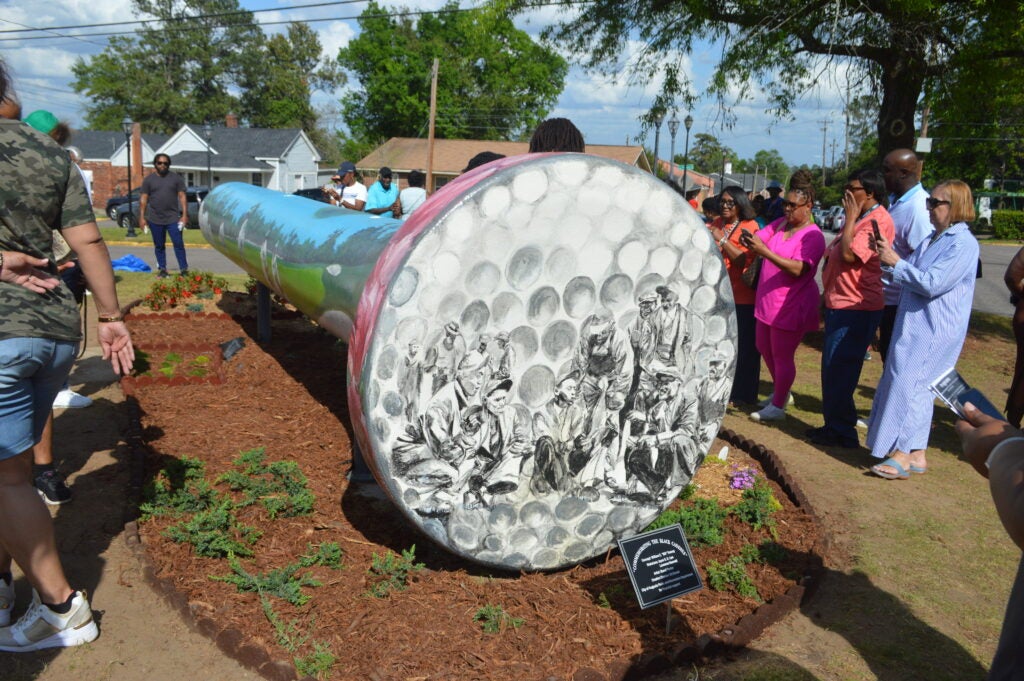
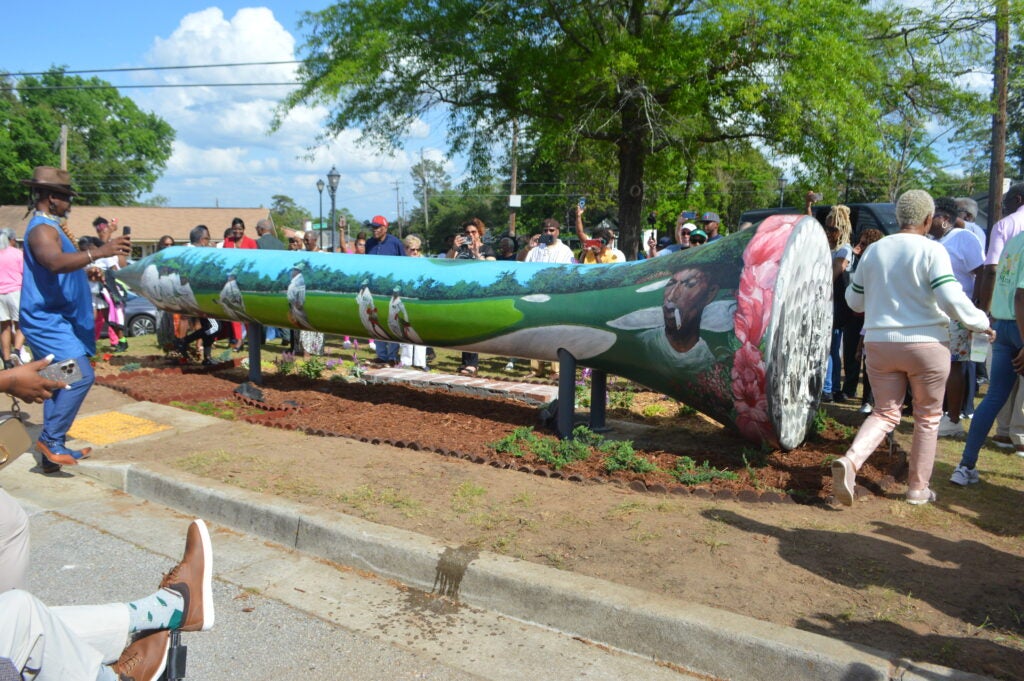
Carrying on the legacy of caddies
Caddies and other workers were recognized with their names carved into bricks, forming a monument on the ground beside the sculpture. Names commemorated here include: caddie Josh Aaron, caddie Henry Clark, caddie Austin Jackson, caddie Will Reed, caddie James Abney, caddie Sampson Coleman, caddie Henry Jones, caddie Robert Ross, laborer Fred Ansley, cook Lula Collins, kitchen helper Mary Latson, caddie Jessie Walton, caddie Henry Bennett, waiter Joseph Connelly, greenskeeper Matthew Lee, caddie Benjamin Webb, caddie Robert Blount, grasscutter Cleveland Courtney, caddie Albert Lyons, caddie Ronald Whitfield, caddie Herbert Brown, caddie Hugh Crawford, caddie Oscar Lyons, caddie Rufus Whitfield, caddie John Butler, greenskeeper Alec Davis, caddie Samuel Lyons, greenkeeper Eugene Williams, caddie William Butler, caddie Clinton Dickson, caddie J.B. Mckie, caddie Robert Butler, caddie Floyd Henderson, houseboy Jessie Marshall, porter George W. Butt, caddie Ernest Hill and caddie Bishop Reed.
At a later date, the project will evolve with the implementation of a panel with a QR code that will include additional names, drawn from decades of Augusta’s African American caddies and other contributing local golf staff.
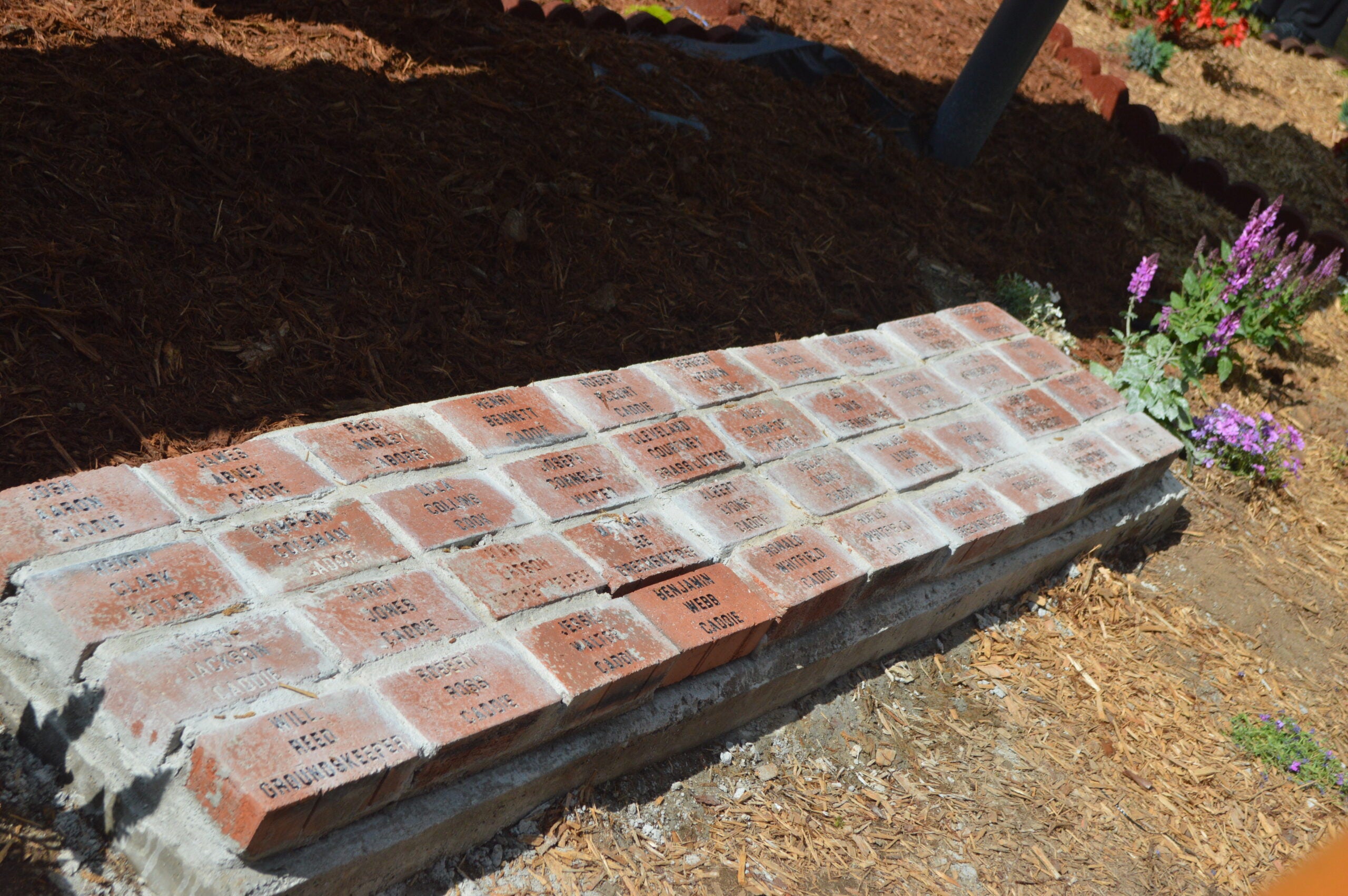
The language of flowers
Surrounding the engraved memorial bricks are different flowers, that according to Joyce Law, chair of the Commemorative Masters Champion Caddies Project, have meanings all their own.
The top of the tee itself is painted with a bright pink wreath of azaleas, which represent the 11th, 12th and 13th holes on the green, also known by golfers as “Amen Corner.”
Eight purple phlox plants have been planted around the brick memorial, which represent eight decades of exclusive service by African American caddies.
The white phlox represent golf balls.
Towering purple salvias represent the reputation of Augusta’s champion caddies.
Law said that when butterflies fly around these flowers, “they should remind us of the ongoing impact of golf.”
